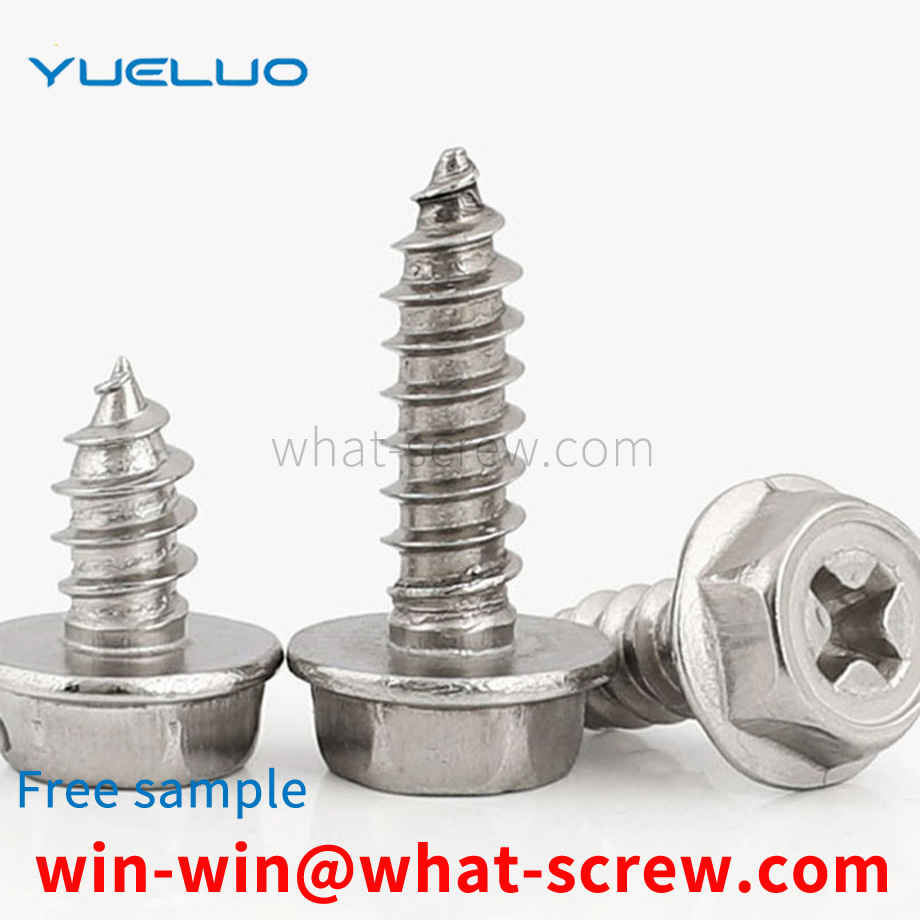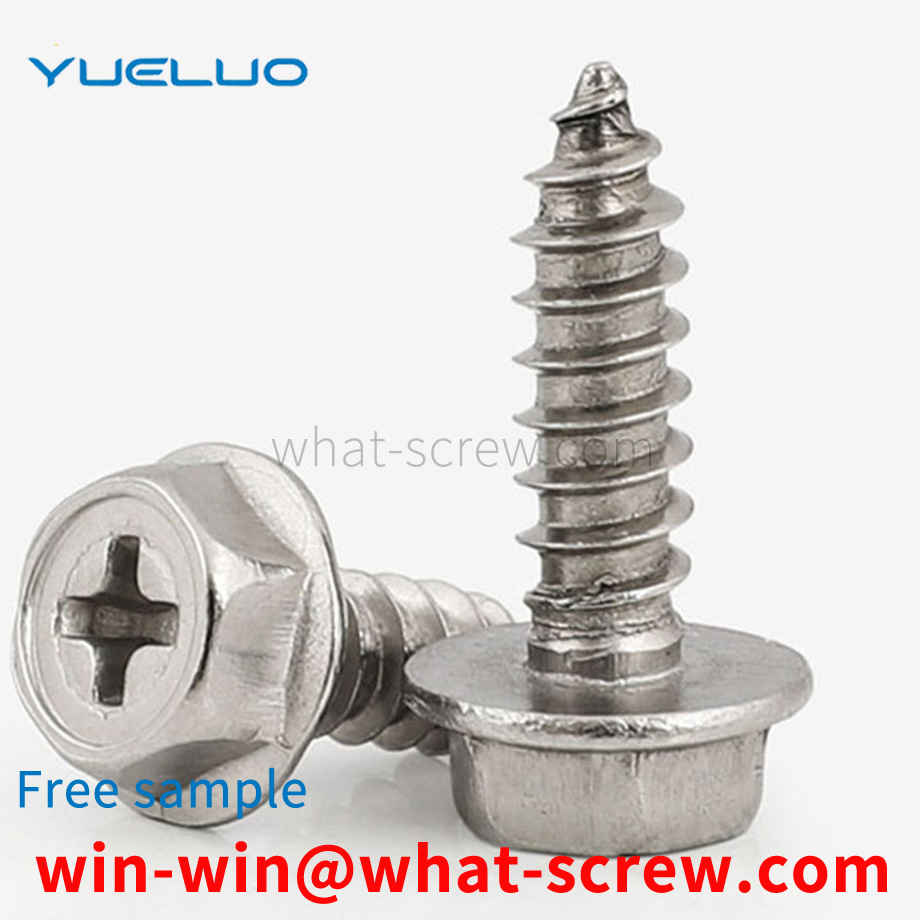During the daily use and operation of mechanical equipment, due to the influence of external load, internal stress, wear, corrosion and natural erosion, individual parts or the whole change size, shape, mechanical properties, etc., which reduces the production capacity of the equipment. The consumption of raw materials and power increases, the quality of products decreases, and even personal and equipment accidents are caused. Therefore, in order to make the machinery and equipment can often play the production efficiency and prolong the service life of the equipment, the equipment must be properly repaired and routinely maintained.
Common fastening screws include self-tapping screws, fine-pitch drywall screws, traditional Bristolwood screws, and fiberboard screws. The following are the characteristics of commonly used screws, everyone should choose them reasonably. BristolSelf-tapping screws The correct application of self-tapping screws should be used for the fastening and connection of metal materials with pre-drilled holes. It has the function of automatically tapping out the internal thread on the metal body, and can complete the thread engagement with it to play a tightening role. However, due to its high thread bottom diameter, when it is used in wood products, the cut into the wood will be shallower; and because the thread pitch is small, there is less wood structure between every two threads. Therefore, it is unreliable and unsafe to use self-tapping screws for wood mountings, especially loose wood. Drywall Screws The proper use of fine-pitch drywall screws is for fastening and joining between metal studs and plasterboard. It suffers from similar drawbacks as self-tapping screws when used on wood mountings. Moreover, due to the large diameter of the head of the dry-wall screw, the embedding of the head is poor, and it is easy to cause unevenness between the head of the screw and the surface of the mounting part after installation. Traditional Bristolwood screws Before using traditional Bristolwood screws, pre-drilling holes are required on the wooden mounting parts, otherwise it is easy to cause wood cracking. In addition, since the traditional Bristolwood screws are not heat-treated, the use of electric tools can easily cause the groove shape to be damaged, and manual installation is very laborious. Fiberboard screws are relatively new types of Bristolwood screws, suitable for power tool installation. However, due to its relatively simple thread design, it still cannot effectively solve the stubborn problem of easy cracking when used on hardwood, and it does not have any advantages in screwing speed and screwing torque. [2]
At present, in the era of industrialization, rivets used in specific occasions, automobiles, and aviation industries can only rely on professional tools and equipment to complete the riveting method.
Bristolsquare nut described by Guangdong Yueluo Hardware Industry Co., Ltd. includes a nut body 1, the nut body 1 is in the shape of a cube, the side length is 7.6mm, and the height is 2.4mm. The upper and lower ends of the nut body 1 are respectively set. There are circular protrusions 2 and circular protrusions 3 with a height of 0.25mm, and the circular protrusions 2 and the circular protrusions 3 are respectively tangent to the upper and lower surfaces of the nut body 1 in a square shape. A through hole 4 is provided in the middle of the shaped protrusion 2 and the circular protrusion 3, and runs through the nut body 1. The opening of the through hole 1 is provided with a chamfer 5 of 30°, and a thread 6 is provided on the inner wall of the through hole 4. , the circular protrusion 2 is provided with a number of strip-shaped protrusions 7 along the circumference inward to the opening of the through hole 4. The number of the strip-shaped protrusions 7 can be arbitrary, and the ideal number is 26, and the through hole 4 is open. There are several strip-shaped grooves 8 at the circumference of the circular protrusion 3. The number of strip-shaped grooves 8 can be arbitrary, and the ideal number is 26. The circular protrusions 2 and the circular protrusions 3 There is a chamfer 9 of 15° extending outward to the prism of the nut body 1 . The production of Bristolsquare nuts described by Guangdong Yueluo Hardware Industry Co., Ltd. is basically the same as the traditional nut process. The key point is to use a punching machine to punch out circular protrusions on both ends. High, and the circular protrusion 2 is punched again to make a bar-shaped protrusion 7, and at this time, the height of the circular protrusion 2 is consistent with the plane height of the circular protrusion 3, and the circular protrusion 3 is formed by stamping. groove 8. The contact surface of the nut body 1 is increased by providing circular protrusions 2 and circular protrusions 3 on the upper and lower end surfaces of the nut body 1, and respectively providing a bar-shaped protrusion 7 and a bar-shaped groove 8 at the two circular protrusions. Therefore, the friction between the nut body 1 and the fastener is effectively increased, and a good fastening effect is achieved.
Mine trucks are required for underground construction and coal transportation. With the vigorous development of energy, the output of coal has increased significantly, and the demand for mine trucks has increased. The axle card is an important part of the mine car. Its shape is irregular, and the blank is a casting. It needs to be finished on the semicircular surface whose upper center is matched with the mine car axle. At present, the mine truck axle card is generally processed by a milling machine, which has the problem of low efficiency.
We have many years of experience in the production and sales of screws, nuts, flat washers, etc. The main products are: external hexagon auto parts screws, knurled cup head screws, trapezoidal bolts, double-way hexagon isolation column nuts and other products, we can provide you with suitable for your products. BristolFastener Solutions.



















 Service Hotline
Service Hotline




